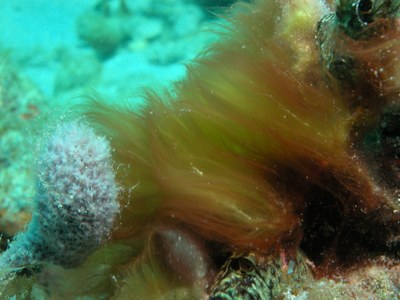Cerdanyola del Vallès, 1st March 2021. An international study, co-led by researchers from the Consejo Superior de Investigaciones Científicas (CSIC), has identified a new pharmacological site in tubulin, a protein that is part of the structures that transport substances in cells, called microtubules. The discovery of this new target, using a new compound of natural origin from blue-green algae (cyanobacteria), may contribute to the development of drugs for the treatment of cancer, Alzheimer's disease and emerging viral infections.
Microtubules are intracellular structures that function as true cellular highways for the transport of substances, vesicles, organelles and even viruses, in the case that a cell gets infected. In most viral infections, they are the transport routes to generate the viral factories, regions close to the nucleus where virus production is concentrated (the viral nucleic acid and the proteins necessary to form the virus cover). Researchers believe that the pharmacological destabilization of microtubules would help to prevent the generation of viral factories in the cell.
The work, published in the journal PNAS and in which researchers from the Margarita Salas Biological Research Center (CIB-CSIC) and the Center for Natural Products, Drug Discovery and Development (CNPD3) in Florida (USA) have participated, includes the procedure characterization of a natural product, obtained from cyanobacteria, which prevents the activation of tubulin. "As the protein is inactivated, microtubules cannot be created, intracellular transport is blocked and, most importantly, the separation of chromosomes is prevented during cell division," explains Marian Oliva, researcher at the CIB-CSIC and author of the study.

Figure: cyanobacteria obtained in the Florida coast. /Raphael Ritson-Williams.
X-rays to determine the structure
Part of the research consisted in the performance of high resolution macromolecular crystallography experiments on the XALOC beamline of the ALBA Synchrotron. There, it was possible to resolve the three-dimensional structure of T1D-GB1 at a resolution of 1.94 Å, which allowed to unequivocally locate the ligand density in tubulin and thus define the new drug site.
A new therapeutic target
Tubulin, the protein that is part of microtubules, is one of the most successful targets for drug discovery against viral, neurological or cancer diseases. Until now, six different sites that promote the stabilization or disassembly of microtubules have been identified, including the one of this investigation.
Each drug target within tubulin has shown to modify its function differently. There are very effective targets, but their modulation with drugs is very toxic. Others are less harmful, but less effective. "Finding a new target implies having a new range of possibilities, with the option of being able to find drugs that, without being toxic, are effective for treating diseases", concludes researcher Marian Oliva from CSIC.
Link to the original news: https://www.csic.es/en/node/1264627




